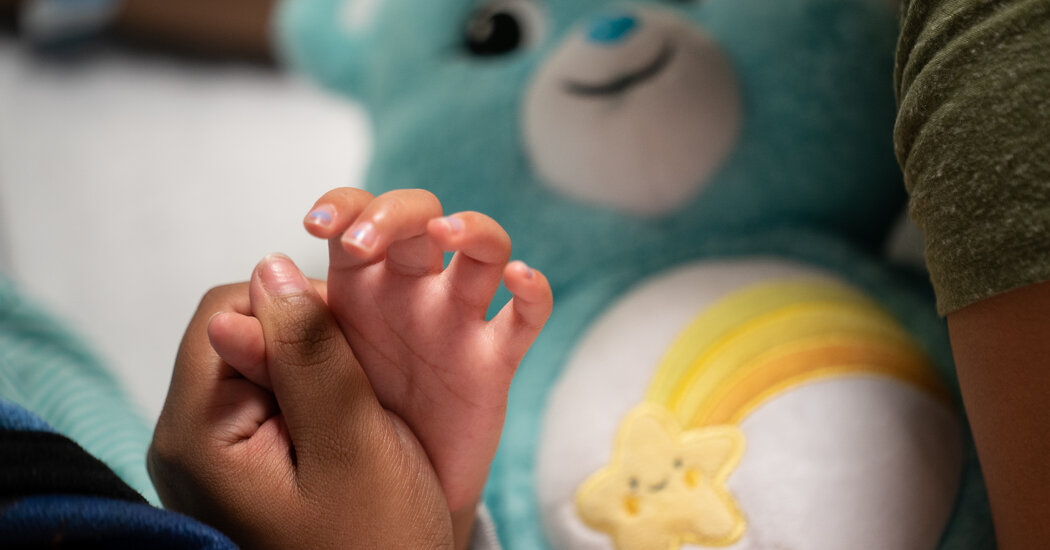Every summer and into fall, hand, foot and mouth disease makes the rounds in schools, playgrounds and day cares. But this season, some parents and pediatricians have noticed an unusual uptick in cases.
The Centers for Disease Control and Prevention doesn’t require doctors to report hand, foot and mouth disease, so there is little concrete data available on case counts. But health officials in a number of states that track outbreaks, including Maryland, New Jersey and Virginia, said there had been more outbreaks in 2025 compared to recent years.
We asked experts what families should know about hand, foot and mouth disease, including how to prevent your children from getting infected and when they can go back to school.
What are the symptoms of hand, foot and mouth disease?
Hand, foot and mouth disease is a viral illness that is most common among children under five years old. But anyone can get it.
It usually starts with a low-grade fever but is characterized by red spotty rashes across — you guessed it — the hands, feet and mouth. These spots can develop into small blisters, including irritating sores that appear on the tongue, gums and inner cheek. The rash is usually not itchy, but it can be painful.
Some parents worry that a rash is a sign of chickenpox or measles. But the chickenpox rash usually spreads from the torso outward, and measles from the head down, said Dr. Natasha Burgert, a pediatrician and national spokeswoman for the American Academy of Pediatrics, whereas rashes for hand, foot and mouth disease usually remain in those areas. (Sometimes, a rash can spread to the buttocks.)
Is it contagious?
Hand, foot and mouth disease is very contagious and often spreads through saliva, mucus and through the air, via sneezing. (Unlike chickenpox, the rashes themselves aren’t infectious, Dr. Burgert said, but oozing blisters are.) Because of the mouth sores, infected children tend to drool excessively, and others can get infected by touching the same toys, climbing on playground equipment and putting shared objects in their mouths.
The virus can also spread via feces — for example, during diaper changes and through contaminated pool water. At home, where close contact is constant, transmission can be almost unavoidable between family members, including older children and adults. “We’re certainly seeing that with this round,” Dr. Burgert said.
Adults are generally less likely to get hand, foot and mouth disease because they have better immunity and are more conscientious about hand washing. And most adults who do get infected don’t develop symptoms.
Some measures to stop the spread include regular hand washing, staying away from sick people and disinfecting objects and surfaces.
How do I care for a sick child?
Most cases are not serious and symptoms are manageable at home. Acetaminophen and ibuprofen can help manage fever and pain, especially in the first three days of illness when staying ahead of symptoms can make a big difference, Dr. Burgert said.
Dehydration is the biggest risk, as children often feel too sick to drink anything and it hurts when they try, thanks to the mouth blisters. Popsicles, smoothies and other cold drinks can soothe the sores and help children stay hydrated, said Dr. Edith Bracho-Sanchez, a pediatrician at Columbia University Irving Medical Center in New York. Soft foods, like applesauce, oatmeal and yogurt, are also good bets.
Should I take my child to the doctor?
A majority of children can recover at home. But in rare cases, hand, foot and mouth disease can cause serious complications like brain swelling and viral meningitis.
Take your child to the doctor if he or she has a temperature above 103; signs of dehydration, like little to no urine; or if the rash spreads to the arms, legs or other parts of the body, said Dr. Emily Boss, the director of pediatric otolaryngology at Johns Hopkins Medicine in Maryland. The same advice applies if fever persists or the illness gets worse after three days, as well as if your child becomes unusually quiet or hard to comfort.
While there are no antibiotics for hand, foot and mouth disease, doctors can provide relief options and make sure there aren’t any other issues going on, such as strep throat.
“Any time a parent is concerned or needs reassurance, they should see a doctor,” Dr. Boss said.
When can I send my child back to school?
It’s safe for children to return to school or day care once their open blisters have crusted over, uncontrolled drooling has stopped and they have been free of fever for at least 24 hours without medication, Dr. Boss said. This usually happens within seven to 10 days of symptoms appearing.
Remember that most cases clear up on their own — often with nothing more than rest, hydration and ice pops.
“It looks much scarier than it is,” Dr. Boss said.
Simar Bajaj covers health and wellness.
The post Hand, Foot and Mouth Disease Is Spreading Again This Season appeared first on New York Times.




